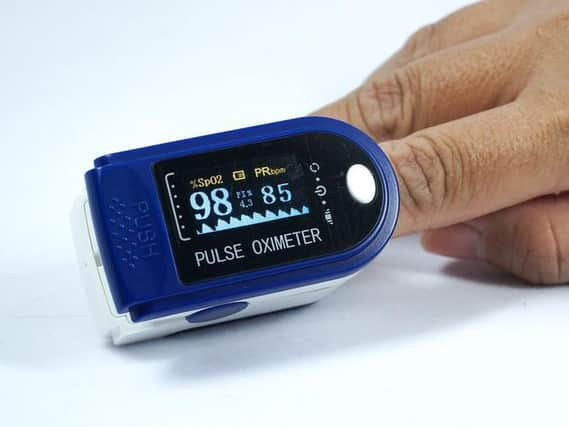Covid positive patients at risk in the Banbury and Oxfordshire areas are offered Covidcare@home


People who are Covid-19 positive and at particular risk of developing a more severe form of the disease are being offered Covidcare@home - a system linked with the Emergency Assessment Unit at Banbury's Horton General Hospital.
The system provides them with an oxygen saturation monitor that will tell them or those caring for them whether they need more medical intervention at hospital.
Advertisement
Hide AdAdvertisement
Hide AdThose who might need this facility are those who are over 65, patients with particular symptoms or a certain medical history or those from the black and ethnic minority community.
As well as the oxygen monitor, the patient will be given instructions what to look for, what to do and when to contact the hospital, should the readings indicate this is necessary.
Hospitals are coming under increasing pressure as the second wave of the epidemic sees raised numbers of Covid-positive cases and more hospital admissions.
A spokesman for the Oxfordshire Academic Health Science Networks (AHSN) said: "As part of the local response to managing the second wave of the pandemic, the NHS is providing some people who have coronavirus with a pulse oximeter to monitor the oxygen levels in their blood at home for up to 14 days.
Advertisement
Hide AdAdvertisement
Hide Ad"These are being given to people with symptoms and either clinically extremely vulnerable to coronavirus or aged 65 or older, including care home residents."
The spokesman said Covidcare@home is a way of closely monitoring patients safely at home and responding quickly if their condition worsens to the point where they need to be in hospital. It is not a treatment.
"Local health systems are in the early stages of managing this new approach and the way they are doing this varies. In Oxfordshire it is known as Covidcare@home and brings together key clinical expertise including from the Emergency Assessment Unit at the Horton," he said.
A pulse oximeter is a small medical device that is put on the tip of the finger to check someone’s oxygen levels. Pulse oximeters measure blood oxygen levels by transmitting light through a finger - they are more accurate than smart watches or phones which make less accurate reading by reflecting light off the skin.
Advertisement
Hide AdAdvertisement
Hide AdBy regularly monitoring oxygen levels, it can be easier to spot if coronavirus symptoms are getting worse and whether people need to be admitted to hospital, which the Covidcare@home teams will arrange.
Research has shown that patients most at risk of becoming very unwell from coronavirus are best identified by oxygen levels. Because of this, the use of a pulse oximeter at home is recommended for these people. It means they are more likely to get the help they need as quickly as possible if their condition worsens.
A patient diary and information is available to download which includes step-by-step, written instructions on using an oximeter and what to do in case of concerns. Family/carers are involved where appropriate. There is also an NHS film on how to use a pulse oximeter. Translated and accessible versions of the patient diary are being made available.
Patients are contacted regularly by the service and support is available round-the-clock. The guidance provided to patients describes what to do if oxygen levels drop and who to contact.
Advertisement
Hide AdAdvertisement
Hide AdPatients who require drug treatments are managed in hospital. A small number of patients may be offered drug treatment at home as part of a research trial.
Further information about coronavirus symptoms and treatment can be found here.
Early experiences of implementing this approach have been linked to reduced mortality, hospital length of stay and the number of patients requiring intensive care admission and ventilation.
It is understood that a similar system was used in Germany last year during the first wave of Covid with good results.